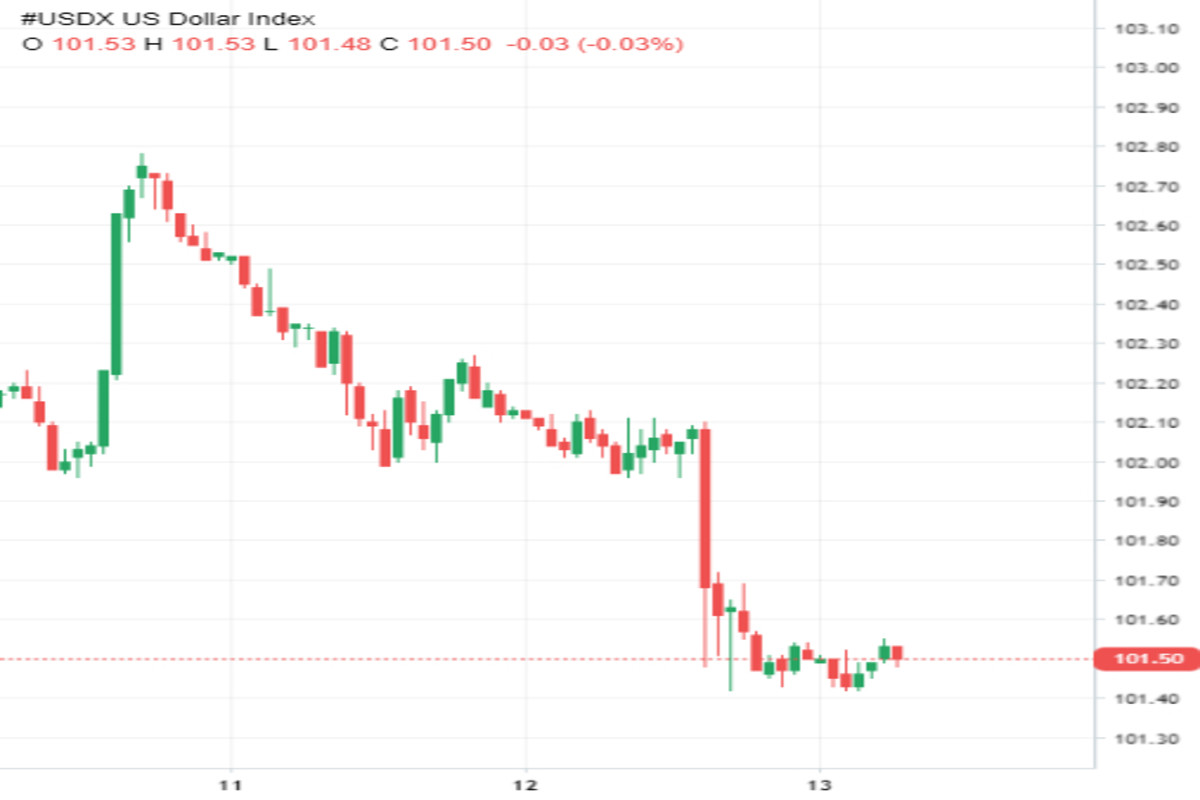
The US Federal Reserve is finally reaping the rewards of its long fight against inflation. Price growth in the US is noticeably weakening, which may force American policymakers to stop the tightening cycle very soon. Such dovish prospects are scaring the dollar bulls, and USD is bracing for the worst.
This month, the greenback has the weakest performance compared to other majors of the G10 group. Yesterday, DXY plummeted by 0.6% and ended the session at 101.49, its lowest level since February this year.

A significant easing of hawkish sentiment among traders following the publication of the US inflation report for March has become a headwind for the US currency. Last month, US consumer prices grew by a mere 0.1%, below the estimate of 0.2% and the February reading of 0.4%.
Meanwhile, annual inflation displayed its weakest growth since May 2021. Over 12 months, the indicator has increased by 5%, while in February, it stood at 6%. The softer inflation data has convinced market participants that the Fed is approaching the end of the current tightening cycle, which began exactly a year ago.
Immediately following the report's release, analysts at Goldman Sachs stated that they no longer expect a rate hike in the US in June. Meanwhile, futures markets bet that the central bank will change its monetary policy in the second half of the year.
"Higher inflation could have spurred hawkish market expectations and convinced investors that the FOMC meeting in June would also be 'live.' But now that we see significant easing of inflation, expectations are growing that the Fed will begin lowering rates later this year, especially if the US economy sharply slows down," said currency strategist Joe Manimbo.
Currently, most traders believe that the rate hike in May will be the last in the current tightening cycle. Such a dovish scenario is putting significant pressure on the dollar and hampering its growth ahead of the Fed's hawkish decision next month.
The fact that the Federal Reserve will raise rates in May by 25 basis points also raises almost no doubts at this stage. Futures markets see an 80% probability of such a scenario.
Investors' confidence in the US central bank's decision has been supported by stable core inflation. According to the data published yesterday, the Fed's preferred inflation gauge went up to 5.6% year-on-year in March, compared to February's growth of 5.5%.
"The statistics show that core inflation is actually accelerating. This indicates that the Fed still has much work to do," economist Andrew Patterson at Vanguard Group said.
Mary Daly, President of the Federal Reserve Bank of San Francisco, currently shares a similar view. Yesterday, she stated that the US economic strength, robust labor market, and still-too-high inflation suggest further tightening.
Her colleague from the Federal Reserve Bank of Richmond, Thomas Barkin, also expressed a similar view. He noted that recent data on price pressures is not weak enough, indicating the need to continue raising interest rates.
Considering the hawkish stance of Fed officials, experts do not rule out short-term spikes in the value of the US dollar ahead of the FOMC meeting in May and possibly afterward. However, the overall trend for the dollar will remain bearish.
According to Erste Group Research, the euro could benefit the most from the weakness of the US currency this year. The strengthening of the EUR/USD pair will be supported by the fact that the Fed will move to lower interest rates much earlier than the European Central Bank (ECB).
By the way, at the end of yesterday's trading, the European currency showed one of the best results against the dollar. It surged by more than 0.7% and reached the level of 1.0993.
According to analysts' forecasts, expectations of further rate hikes by the ECB will continue to support the euro in the near term, which may further weaken the greenback.
 English
English 
 Русский
Русский Bahasa Indonesia
Bahasa Indonesia Bahasa Malay
Bahasa Malay ไทย
ไทย Español
Español Deutsch
Deutsch Български
Български Français
Français Tiếng Việt
Tiếng Việt 中文
中文 বাংলা
বাংলা हिन्दी
हिन्दी Čeština
Čeština Українська
Українська Română
Română

